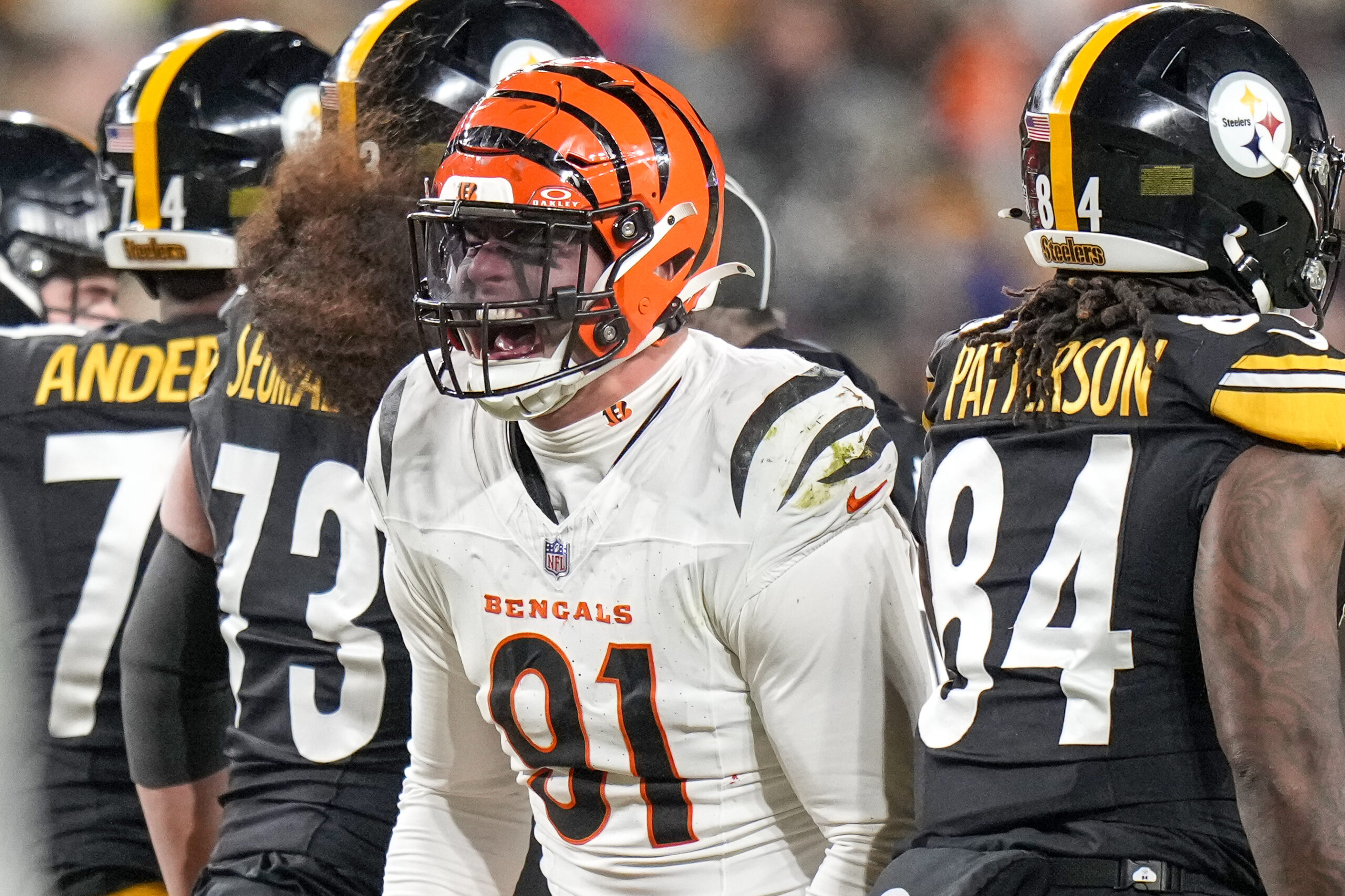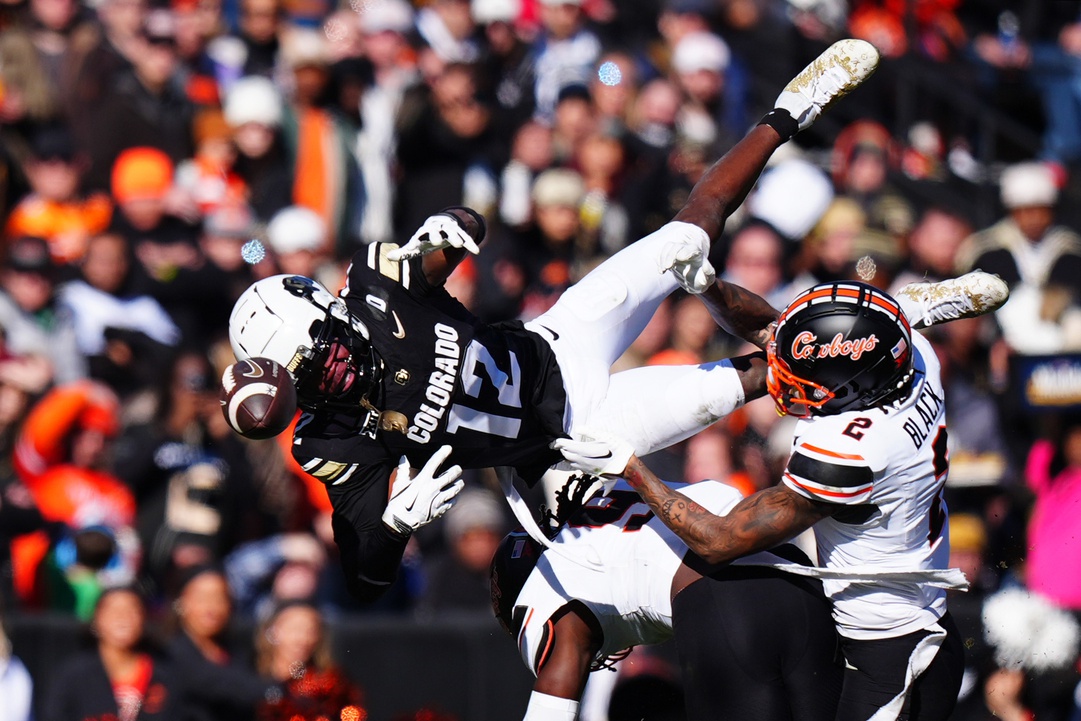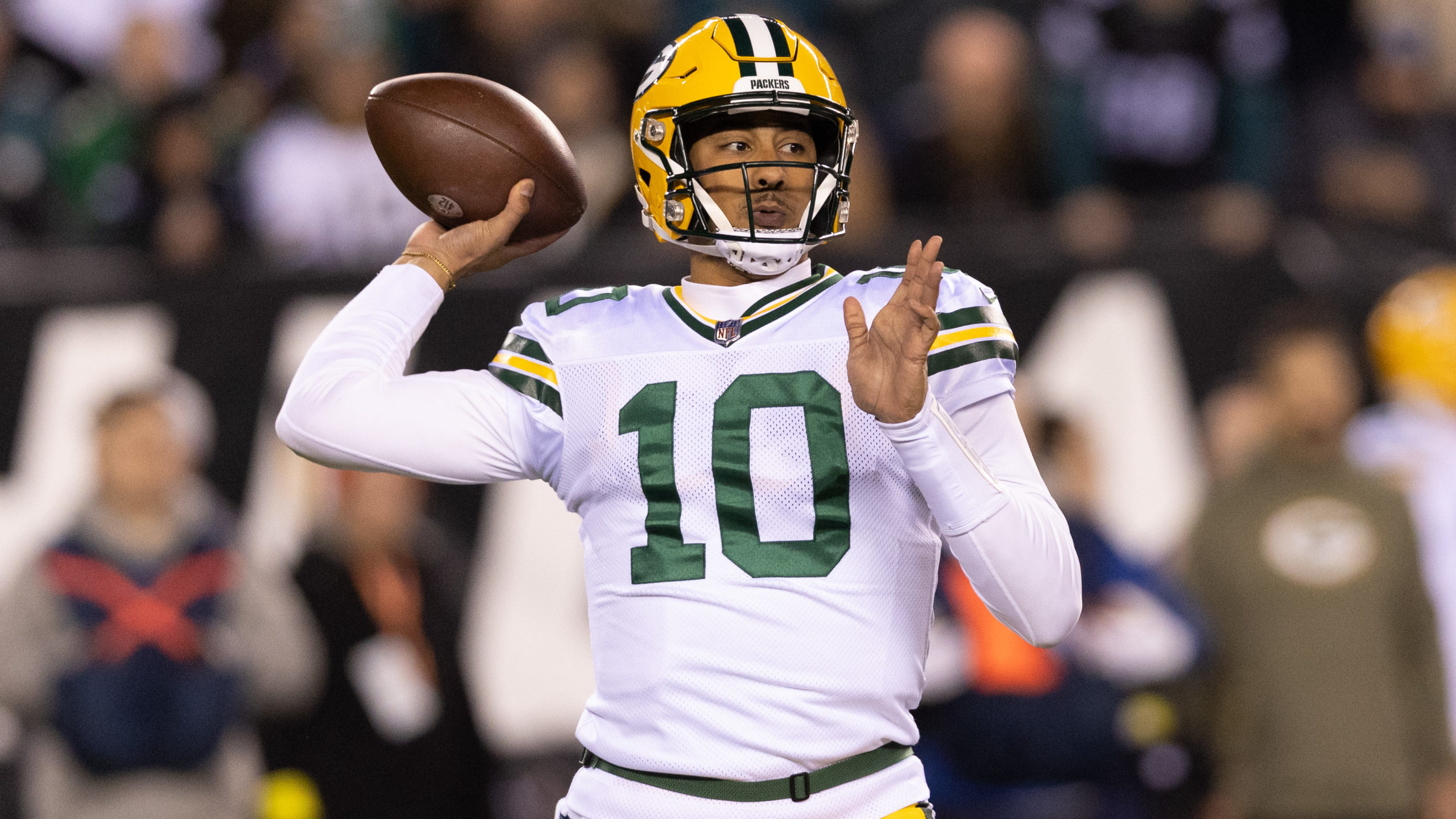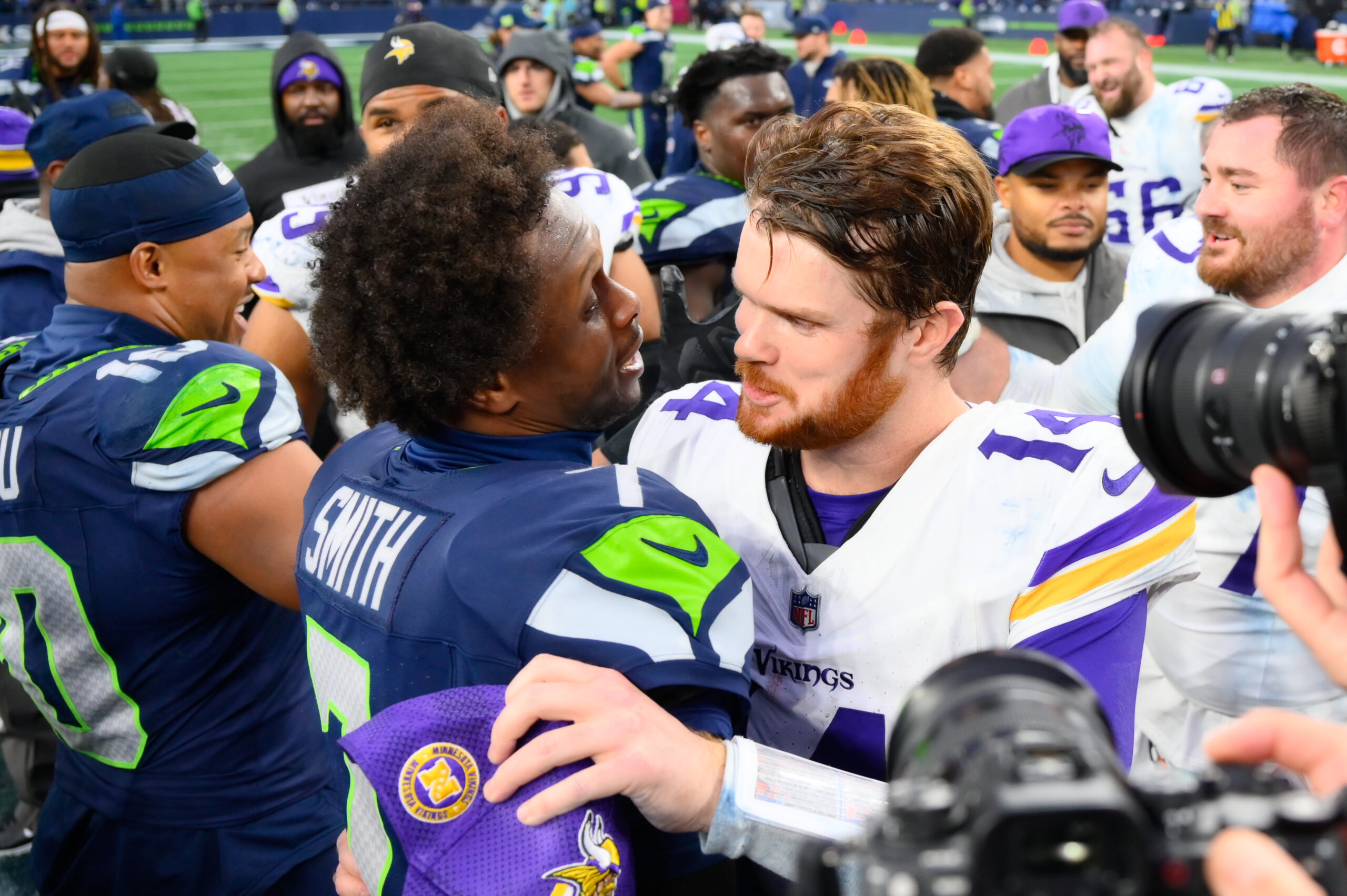NFL Analysis
1/23/25
9 min read
What Will The Ben Johnson-Caleb Williams Offense Look Like In Chicago?
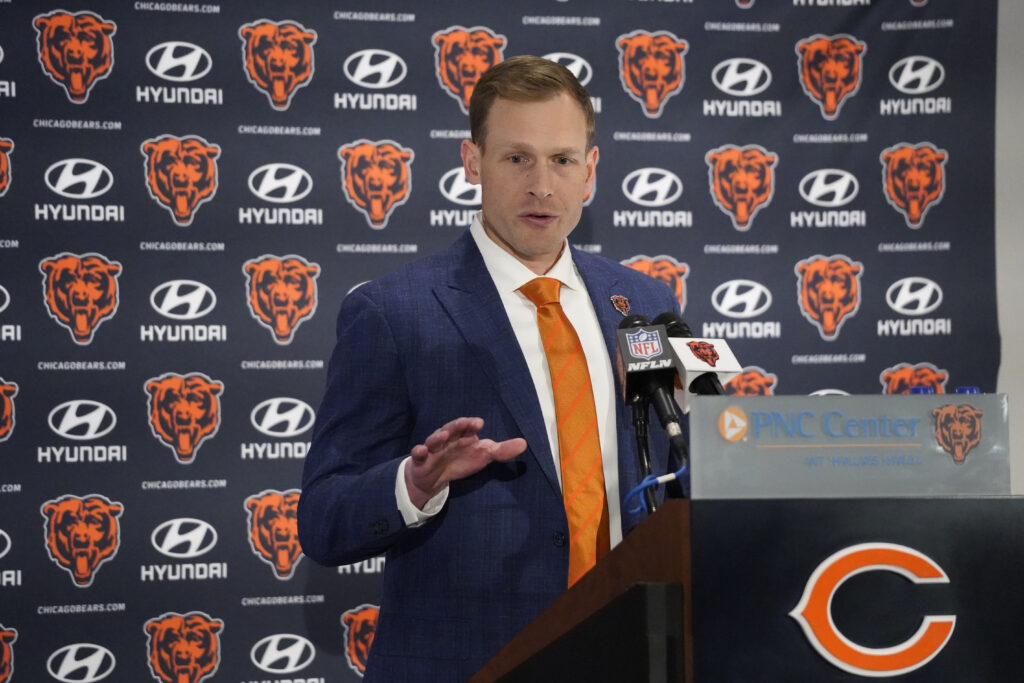
“There’s no doubt Caleb [Williams] played a large component into my decision,” were the words of Ben Johnson during his introductory press conference as the new head coach of the Chicago Bears.
Johnson, previously the offensive coordinator of the Detroit Lions, put off head coaching opportunities in previous offseasons to wait for the right fit. The allure of Williams, the first overall pick from the 2024 draft, was enough to pull Johnson away from Detroit for his first shot at running a team, not just the offense.
Of course, the offense will be the focus for Johnson — one of the league’s best play-callers, designers, and sequencers. That focus centers around Williams and getting the most out of the skills and talent that made him the first pick of the draft and not repeating the flaws of a rookie season that had Williams 32nd among 36 qualified quarterbacks in EPA per play and last among the four rookie passers who played significant time.
Johnson’s main task when he was promoted to offensive coordinator with the Lions was to get the most out of Jared Goff, a former first-overall pick acquired in the Matthew Stafford trade. Goff’s first year in Detroit under coordinator Anthony Lynn wasn’t much of a shift from his final season in Los Angeles.
Goff averaged -0.03 EPA per play in his first season with the Lions, while Lynn was stripped of play-calling duties midway through the season. Dan Campbell took over as the play-caller and promoted Johnson, then the tight ends coach, to passing game coordinator. Johnson was then promoted to offensive coordinator and play-caller that offseason.
With Johnson coordinating the offense, Goff has averaged 0.18 EPA per play, and he led the league in success rate during the 2024 season. Slight tweaks helped play off Goff’s strengths. There was an increase in under-center play-action, and Johnson found ways to open up the middle of the field, especially for the deep dig that Goff loves to throw.
Jared Goff Passing Map By OC With Lions, 2021-2024 (per TruMedia)

The new Bears offense won't look like the Lions' offense, at least not in the sense of a 1-to-1 copy. Goff and Williams have different strengths as passers, and Johnson indicated that his job is to lean into those and build an offense around what his quarterback does best.
“Where I see my role is as a supporter of him. This offense will be calibrated with him in mind… this is not simply a dropping of a previous playbook down on the table and starting there. Nope. We’re ripping this thing down to the studs, and we’re going to build it up with him first and foremost, followed by the pieces around him next.” - Ben Johnson
So, what could that offense look like? What are the foundations that would build off of Williams’s strengths? Just as importantly, what are the elements that went wrong last season and led to the relatively disappointing rookie year? Let’s start there.
Rookie Struggles
Much of the optimism around what the Bears could do on offense centered around the quarterback and the receivers. It was widely considered the best supporting cast for a No. 1 overall pick. But the structure in place never allowed that to become a reality.
Route spacing was less than ideal, and the offensive line never clicked, often allowing interior pressure that forced Williams out of the pocket. Without easy answers in the passing game, Williams defaulted to creation mode, which often caused more problems than it solved.
No quarterback averaged more time to throw on plays outside of the pocket than Williams in 2024 (4.86 seconds) as he ran around trying to make something happen.
But there were also times during the season when Williams stayed in the pocket too long — stubbornly trying to prove he could play in the pocket and within structure, which was one of the knocks on him coming out of USC after his final college season had similar failings in scheme and protection.
Williams never completely looked comfortable in the offense, and things about it made that easier for the quarterback. There was a ton on his plate at the line of scrimmage, but the easy buttons that could have allowed him to settle in after the snap weren’t there as they were for other rookies.
Think about the short passes the Broncos allowed Bo Nix to throw to get into a rhythm or the deliberate buildup of the Washington offense for Jayden Daniels throughout the season — what Daniels was asked to do in Week 1 is nothing like what he’ll be asked to do in the NFC Championship Game.
This isn’t to say Williams’ rookie season was a complete failure. He still had eight games that produced positive EPA. His average in those games (0.18) would place him around the bottom half of the top 10 for quarterbacks this season — the upside was clearly already there. However, the floor from the bad games was much lower than anyone would have imagined.
Finding Answers
That’s where Johnson can come in and help immediately. According to FTN charting, Williams had the lowest rate of attempts going to his first read in 2024 at just 36.5 percent. The structure didn’t do him many favors, and if that first read wasn’t open, there were many times when pressure came, and the play completely broke down.
One of the biggest differences between the good and bad Williams games during his rookie season was how the middle of the field opened up. During his games with negative EPA, Williams threw between the numbers on 34.6 percent of his attempts. In the good games, that figure was 46.8 percent.
| Performance | EPA/Play | Success% | Drpbk | aDOT | Comp% | Yd/Att | Avg Time To Throw | PlayAction% | Between Numbers% | YAC% |
| Good | 0.22 | 47.6% | 312 | 7.5 | 68.2% | 7.5 | 2.82 | 18.2% | 46.8% | 55.1% |
| Bad | -0.27 | 33.9% | 364 | 8.4 | 57.3% | 5.2 | 2.85 | 15.0% | 34.6% | 49.6% |
The problem in those bad games and why throwing to the middle of the field wasn’t some automatic answer is that it didn’t always feel available to the offense. When things weren’t working, those throws weren’t open, and Williams hesitated to throw into tight coverage in that area.
Opening up the middle of the field has been one of Johnson’s specialties with the Lions. Goff loves to throw the dig, and Johnson has created numerous ways to open those up, especially from empty formations.
— Dan's Clips (@dansfilmclips) January 23, 2025
The real biggest difference between the good and bad performances was the effectiveness of the deep ball. In the bad games, Williams forced deep throws with little luck. During games with negative EPA, Williams averaged -0.60 EPA per play with a 19.6 percent success rate on throws of 20 or more air yards, while he averaged 0.59 EPA per play with a 43.9 percent success rate on those throws in his positive games.
Some regression to the mean will help here — Williams has too good of an arm to consistently not hit on those throws — but schematic openings could also help. In those good games, Williams threw more posts and routes that break somewhere instead of straight-go routes down the sideline.
Williams also had some of his best games while leaning on the quick game. That was Chicago’s limited answer early in the season, getting the ball out of the quarterback’s hands and attempting to work around offensive line issues. Those throws also settled Williams down and got him in a rhythm that allowed him to loosen up and trust the offense more.
Bigger Changes
Williams was a better and more willing passer on play-action from under center than given credit for. It just often rarely worked within the game script for the Bears to settle into anything but throwing from shotgun.
— Dan's Clips (@dansfilmclips) January 23, 2025
Last season, 92.3 percent of Goff’s play-action passes came from under center, while just 60.4 percent of Williams’s did.
It wouldn’t be a surprise to see Rome Odunze play more from the slot in a role similar to Amon-Ra St. Brown. That could give Williams a trusted target for some of those middle-of-the-field routes and and a go-to receiver on slants for an easy completion.
Odunze was more effective in the slot as a rookie (1.55 yards per route run to 0.97), and his size could work as a power-slot role while still getting opportunities to work outside.
— Dan's Clips (@dansfilmclips) January 23, 2025
As a rookie, Odunze lined up in the slot on 33.7 percent of his snaps. St. Brown was in the slot 44.1 percent of the time in 2024.
Can This Be A Quick Fix?
Expectations of a former top pick and the most coveted head coaching candidate coming together will be high.
There will be hurdles that need to be cleared before this offense can work immediately. This is clearly not the same offensive line Johnson was working with in Detroit, especially along the interior. But that could be the top priority to fix in the offseason.
Kevin Zeitler is a free agent after his one year with the Lions, though he’ll be 35 years old in March. If the Bears want to really make a swing, Trey Smith is scheduled to be a free agent.
Even if the Bears don’t immediately throw together a top-10 offensive line, improvements should come in that area. Getting passable enough play across the line will go a long way in helping support an offense that should have better options early in the down.
Johnson wants to build around what Williams does best. After a rocky rookie season, we’re still not completely sure what that will be in the NFL. However, understanding that the foundation of the offense should start with finding that answer is why Johnson was successful in Detroit and highly coveted as a head coach.
This already puts the Bears ahead of where they were last season with an offense and quarterback that never meshed. The collaboration between quarterback and coach is now the point.
It’s been a while since the Bears had an effective, efficient offense. Building that is the challenge Johnson wanted and accepted with this job. It shouldn’t take too long to find out if this combination will work.


